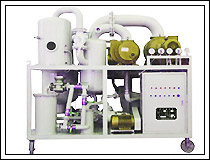Filtration
As a water purification process, filtration clarifies water and enhances the effectiveness of disinfection. This process can very efficiently eliminate all undesirable chemicals, materials, and biological contaminants from contaminated drinking water. Thus, filtration can be defined as a process of separating the solids from a liquid by passing it through a filter. The liquid passed through is called the filtrate while the undissolved solid particles are called the residue.

The method employs an interposing medium through which only the water can pass leaving behind the contaminants. The medium is generally sand, charcoal or artificially prepared media like porous ceramic beds that retains most of the solid, letting only the water to pass through it. Ideally, the entire process cycle is repeated to ensure adequate removal of unwanted particles present in the water. The first stage of filtration will remove the most concentrated chemicals, like chlorine, while subsequent stages will remove smaller and more obscure chemicals like pesticides.
In contemporary times, carbon or porous ceramics are more preferred as they can disperse finer bubbles which means more gas is exposed to the liquid, increasing the gas transfer efficiency. If carbon is used, it is used in the form of a compressed solid block. Filters employing carbon basically clean raw water through both chemical and physical processes. Physically, they act as other traditional filters blocking and sieving out the unwanted solid particles with a molecular structure larger than water. Chemically, through the process of adsorption, carbon breaks the bond the unwanted solid particles share with water and force them to attach to the media.
There are several methods of filtration used, mainly depending on the location/state of the targeted material in the water. Although, this method of water treatment can very efficiently eliminate most bacteria and protozoa, like Cryptosporidium and Giardia lamblia, it fails to remove viruses with diameters smaller than 0.3 micrometer, hence disinfection by chemicals or ultraviolet light often becomes necessary after filtration.
|